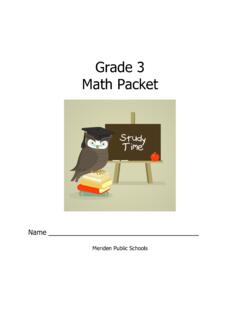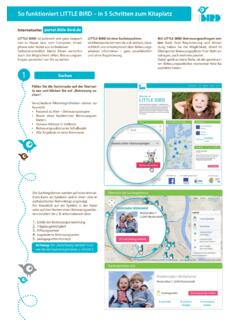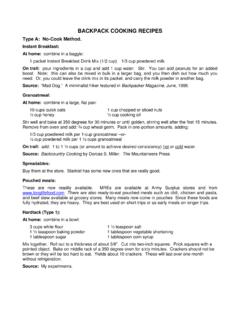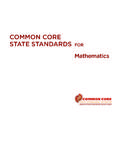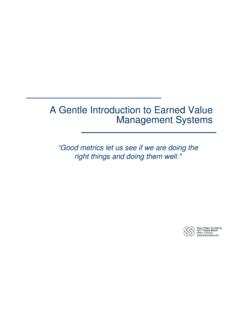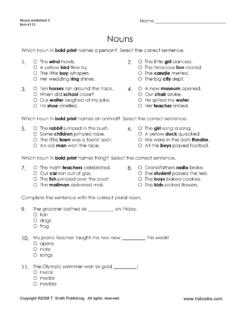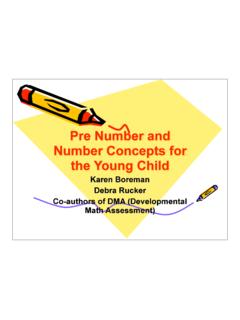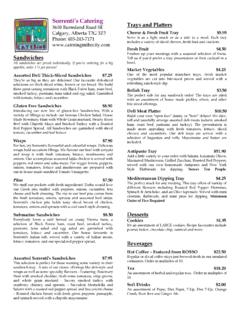Transcription of Giant Story Problems: Visualizing the Language of …
1 Giant Story Problems: Visualizingthe Language of MathRen e ~CMC North - Asilomar - Dec. 2010 Visual LiteracyVisual literacy is the ability tointerpret images as well as togenerate images for communicatingideas and thinking is the ability to turninformation of all types into pictures,graphics, or forms that help communicatethe information Visualizing is ThinkingDrawing information helps children tosee how facts are Literacy in MathematicsYoung children can benefit fromvisualizing addition and subtractionusing simple bar concepts are best shown inmaps and children can interpret problemsmore successfully if they areencouraged to visualize the keyelements in a map or assists work inmeasurement and recording of :Visual Literacy in Teaching and Learning: ALiterature Perspective - Suzanne Literacy K-8~ e Goularte~ Story Problems.
2 Visualizing the Language of Math ~ Asilomar 2010Re-composing helpsunderstandingReading information in one form(such as words and sentences)and summarizing it in another form(such as a diagram or table)requires students to think about themeaning before they can re-compose the information. Re-composing is a key strategy inaiding Story Problems LessonStudents use Language , symbols, and pictures in the problem -solving Needed:large group: chart paper; markers; Story problem written at top of chart papersmall groups: prepared Story problems; white construction paper; colored markersindividual work: prepared Story problems, unlined white paper, crayons or markersWhole Class Introductory Activity:Post a blank sheet of chart paper or butcher paper, on whichyou ve written or glued a Story problem , large enough so allstudents can read it.
3 Choose volunteer students to do thefollowing:Read the problem key words in the the Story using simple an equation that solves the a sentence that answers the check to see that everything or Small Group Work:Small groups follow the same procedure as used in the wholegroup introduction. Prepared Story problems printed in large font are distributed to thegroups. Use challenging Story problems. If each group has a different problem but theproblems are related in some way, the sharing out time offers more opportunity forreinforcing concepts and strategies. Student groups share their strategies with the class,explaining why they drew what they drew, and and the reason they chose students to ask questions about strategies and follow up with questionssuch as the following for each group:Does everything seem to work in this strategy?
4 Could it have been solved a different way?Individual Work:Students go on to solve individual Story problems on their ownusing the same procedures. Story problems can come from the book or from a bank ofteacher-prepared Story problems. If desired, sorted into boxes by type ( ,addition/subtraction; multiplication/division; fractions; two-step problems, etc.)Ren e Goularte~ Story Problems: Visualizing the Language of Math ~ Asilomar 2010 Story problem from a 2ndgrade whole class Story Problems SamplesFor an expanded lesson plan, go to ~ in the search keyword box,type Giant Story Problems. For more information: problem at right shows a fifthgrade group s work exploringmultiplying fractions, a skill they hadnot yet been introduced to in theirclassroom. In this problem , studentsneeded to identify one-half of were introduced to Story problemsfor the first time as a whole group in a sharedreading/shared writing activity.
5 Students identifiednumber words as the teacher read the problemaloud, and then volunteer students did the drawingand the writing of the equation and the sentencethat answers the e Goularte~ Story Problems: Visualizing the Language of Math ~ Asilomar 2010 Ren e Goularte~ Story Problems: Visualizing the Language of Math ~ Asilomar 2010 Eleanor is going out for pizza with friends, and she is watchingher weight. If she plans to have one slice of pizza, would she bebetter off orderinga personal pizza or a small pizza?a small pizza or a medium pizza?a medium pizza or a large pizza?a large pizza or an extra large pizza?Brian is hungry for pizza, and he wants to get the best he be better off orderinga personal pizza or a small pizza?a small pizza or a medium pizza?a medium pizza or a large pizza?a large pizza or an extra large pizza?
6 Consider:What do you need to know to answer these questions?Where/how can you get the information?An Assortment of Pizza ProblemsRen e Goularte~ Story Problems: Visualizing the Language of Math ~ Asilomar 2010 TED talk: Dan MeyerMath Class Needs a MakeoverVIDEO ~ that math reasoning is being taught poorly:1. lack of initiative2. lack of perseverance3. lack of retention4. aversion to word problems5. eagerness for formula~ Food for Thought ~Most word problems in mathprograms/textbooks offer exactlythe information the which the students then use topractice computations they ve just learned with the help giving them little more thanadditional computation practice forlessons they ve just learned. This does not teach studentshow to solve problems. What if we gave lessinformation, or too muchinformation, so that studentswould need to make somedecisions as to what theproblem is, what informationthey need, and whatstrategies they might use?
7 Ren e Goularte~ Story Problems: Visualizing the Language of Math ~ Asilomar 2010 Some Food For Thought About problem -SolvingOne Friday, Arnold Zwicky s granddaughter brought home this word problem :Mother cat had 6 kittens. 5 kittens went tonew owners. How many were left?Her answer, duly checked off by the teacher, was 2 cats were left. Is this word problem asking about cats or kittens? Are two answers acceptable?What if this were on a standardized test?_____Read more at Arnold Zwicky's typical Story problem might look like this:There are 5,280 feet in a mile. If you live half a mile fromschool, how many feet from the school is your house?Does this problem even make any sense? Does anybody care how many feet they livefrom school? Is there any problem -solving involved?Consider these alternatives: You live half a mile from school.
8 How long does it take to get there? You live half a mile from school. School starts at 8:00 would happen if students were asked to do problems like these? What wouldstudents do with these questions? What kind of math is involved? Giant Story Problems Samples - PrimaryNine teachers are at a meeting. Four moreteachers join them. A few minutes later,three of them have to leave. How manyteachers are still meeting?There are twenty-two cookies for fourchildren to share. How many cookies caneach child have?Six children are reading in the library. Eachchild has three books. The librarian comesover and gives them three more. How manybooks do they have now?Marcie s mother has eight candy shares candy bars with three of herfriends. How many candy bars are left?Ren e Goularte~ Story Problems: Visualizing the Language of Math ~ Asilomar 2010 Giant Story Problems Samples - AssortedFive fourth graders want to eat lunch in thecafeteria.
9 Lunches cost $ and milk is $.25 students decide to drink water instead ofmilk. How much money do they spend alltogether?A soccer coach promises to buy ice cream from anice cream truck for each member of her soccerteam. Ice creams are $.55 each. Will a ten dollar billbe enough for ice cream for everyone?Samantha is having a birthday party and wants togive each guest a bag of favors. Each bag of favorswill cost about $ If she invites six guests, will$ be enough money?A class of twenty students has decided to have apizza party. Each large pizza costs $ Howmany pizzas should they buy, and how muchmoney will each student need to contribute?Ren e Goularte~ Story Problems: Visualizing the Language of Math ~ Asilomar 2010 Giant Story Problems Samples - AssortedHarold is curious as to how many steps he has totake to walk a mile.
10 What do you think?What portion of a mile is a hundred yard dash?How long would it take to walk to school if theschool were half a mile from your house?Four friends sharea pizza which is cut into eightslices. One person eats two slices; three people eatone slice each. What fraction of the pizza is gone?A bag holds twenty cookies. If you take one-halfthe cookies out of the bag and eat one-half of those,what fraction of the cookies will you have eaten?There are fifty M&Ms in a bag. One-fifth of themare green. How many M&Ms are are not green?Ren e Goularte~ Story Problems: Visualizing the Language of Math ~ Asilomar 2010 Ren e Goularte~ Story Problems: Visualizing the Language of Math ~ Asilomar 2010 Giant Story Problems: Visualizing the Language of MathResources and Suggested ReadingOn the WebTED talk: Dan MeyerMath Class Needs a (blog)Unnatural Currents- Ken Robinson: Changing Education Ways to Create a Culture of Thinking (blog) Zwicky's Blog: A blog mostly about to Think Mathematically: problem Solving, Megacognition, and Sense-Makingin MathematicsAlan H.
